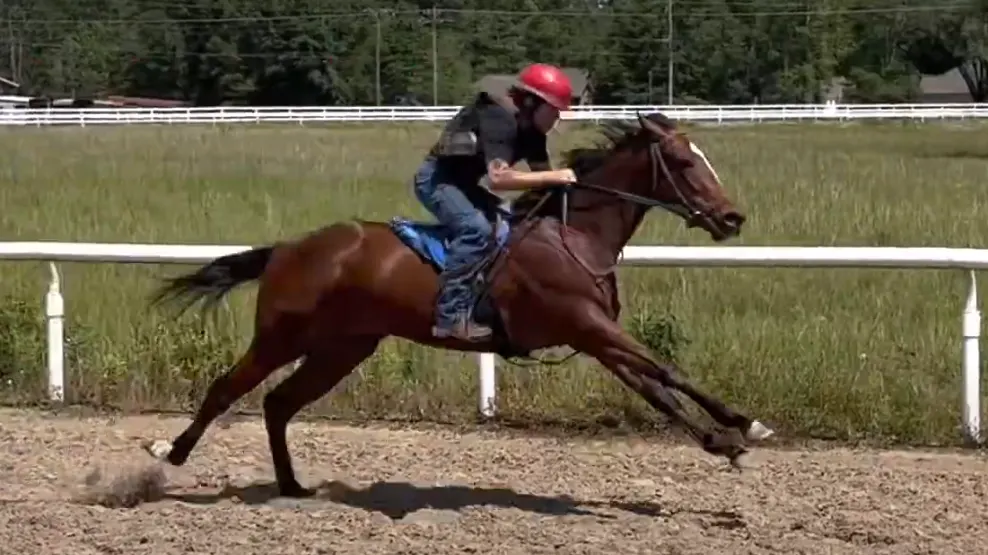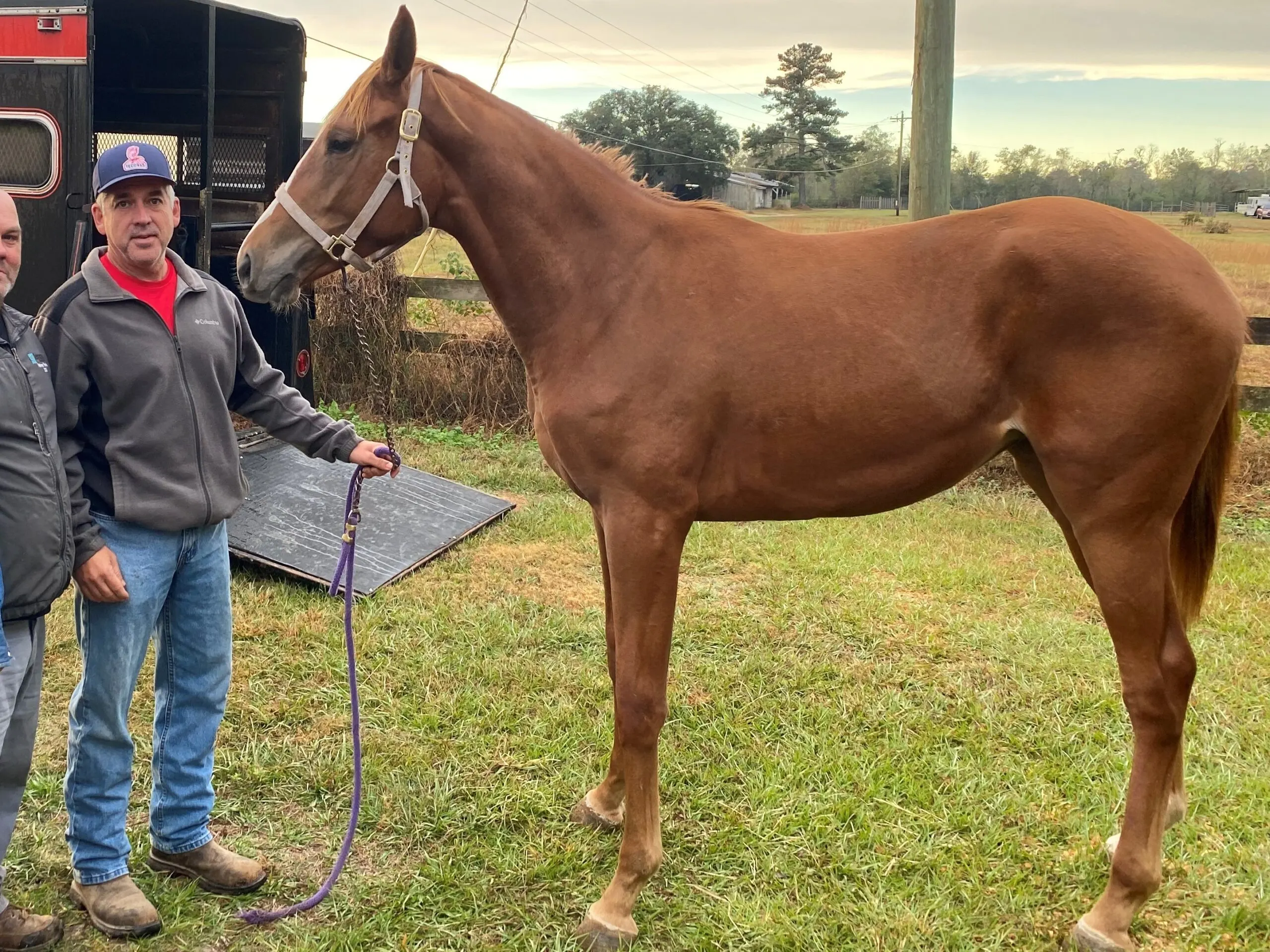Last updated: March 22, 2024
Any links on this page that lead to products on Amazon are affiliate links and I earn a commission if you make a purchase. Thanks in advance – I really appreciate it!
The decision to euthanize a horse following a leg fracture is both heart-wrenching and complex. This practice, steeped in medical rationale and ethical considerations, underscores the unique challenges in equine veterinary medicine.
Horses carry an inherent vulnerability in their slender legs. The juxtaposition of their heavy bodies against the fragility of their limbs presents a unique challenge in equine care, particularly when faced with leg injuries.
The complexity of these injuries is multifaceted, involving factors such as weight distribution, the unique structure of their bones, and their circulatory system, which relies heavily on constant movement.

1. Weight Distribution and Healing Challenges
A horse’s four slender legs carry significant weight, turning any leg injury into a complex issue beyond simple bone repair. The front legs, which bear most of this burden, are especially prone to complications when injured.
Complicating the healing process further is the challenge of effectively immobilizing a large animal like a horse without causing additional problems, such as laminitis in the healthy limbs.
Given these complexities, if a horse is unable to stand and move freely due to a leg fracture, euthanasia is often considered the most humane option to prevent prolonged suffering and ensure the animal does not endure further health complications.

2. Biological and Physiological Challenges
Horses are creatures built for speed, with leg structures optimized for quick, agile movements rather than the robustness required to withstand significant trauma. This inherent design makes the recovery from leg injuries particularly delicate and complex.
Additionally, horses’ natural behavior to stand for long periods, even during rest, complicates the healing process for leg injuries. A critical aspect of these challenges is the horse’s unique circulatory system.
Unlike humans, horses use movement to facilitate effective blood flow, especially in their lower limbs. The “hoof mechanism” or “hoof pump” plays a vital role in this process, where the action of walking helps to pump blood back up through the legs to the heart.
When a horse is immobilized due to injury, this mechanism is disrupted, leading to poor circulation, which can exacerbate the injury and hinder the healing process. Given these biological and physiological intricacies, treating leg injuries in horses is fraught with complications.
The difficulty in ensuring adequate immobilization without impeding circulation, combined with the risk of secondary issues like laminitis, often makes recovery from significant leg trauma a precarious endeavor. These factors contribute to the tough decisions faced by veterinarians and owners regarding the best course of action for the welfare of the injured horse.

3. Pain Management and Quality of Life Considerations
When it comes to managing pain for a horse with a severe leg injury, the challenges are substantial. Even minor injuries can result in lameness, drastically impacting the horse’s quality of life. Such conditions may lead to chronic pain or cause the horse to overuse other limbs, potentially leading to further injuries.
The horse’s ability to express pain is limited, making it crucial for caregivers to closely monitor behavior and physical signs for any indication of discomfort. Effective pain management is not just about addressing immediate discomfort; it’s about considering the long-term implications on the horse’s quality of life.
Chronic pain can lead to behavioral changes, reduced mobility, and even depression in horses, significantly diminishing their overall well-being. Veterinarians and horse owners often face tough decisions when managing such cases.
The goal is always to ensure the horse’s well-being, balancing the potential for recovery against the risk of prolonged suffering. Advances in veterinary medicine, including more sophisticated pain management techniques and surgical options, offer hope for better outcomes. However, each case must be evaluated individually, with the horse’s quality of life as the guiding principle.
In making these decisions, the horse’s well-being remains the paramount concern. It’s a delicate balance between providing the best possible care and acknowledging when humane euthanasia may be the most compassionate option to prevent unnecessary suffering.

The Difficult Choice: Euthanizing a Horse
Deciding to euthanize a horse following a leg injury represents one of the most profound challenges for owners and trainers. This decision intertwines medical insight, ethical principles, and deep emotional connections, underscoring the gravity of ending a horse’s suffering.
Factors Leading to the Consideration of Euthanasia
- Severity of the Injury: Leg injuries in horses can be catastrophic, often involving fractures or significant tendon damage that complicates healing and recovery.
- Impact on Quality of Life: For horses grappling with severe injuries, the prognosis frequently includes ongoing pain, reduced mobility, and a diminished overall quality of life.
- Medical Outlook: Often, the likelihood of a full recovery is minimal, with treatment options offering a prolonged and distressing journey for the horse.
Ethical Dimensions of Euthanasia
- Prioritizing Humane Outcomes: The welfare of the horse is paramount, with euthanasia considered a merciful alternative to prolonged suffering.
- Considering the Future: Decisions are informed by a comprehensive evaluation of the horse’s potential for long-term health and happiness beyond the immediate circumstances.
The Emotional Toll of Euthanasia
- The Bond Between Horse and Human: The deep connections formed with horses decide to euthanize intensely personal and emotionally charged.
- Navigating Responsibility and Guilt: Owners and trainers may wrestle with feelings of guilt and responsibility, pondering if more could have been done to avert the outcome.
- The Grief of Loss: Euthanizing a horse initiates a period of mourning, acknowledging the loss of a beloved companion and athlete.

Advances in Veterinary Medicine
It’s important to note that advances in veterinary medicine have improved the prognosis for some types of leg injuries in horses. Surgical options, regenerative therapies, and better pain management techniques have saved many horses that might have been euthanized in the past.
However, these treatments are often costly and unsuccessful, making them less accessible for the average horse owner.
Expert Insights
- Vulnerability to Injuries: “In addressing the complexities of horse leg injuries, it’s crucial to consider conditions like supporting limb laminitis, a serious complication that can arise in the non-injured limb due to uneven weight distribution.” ‘Supporting limb laminitis: The four important ‘whys’’. Read more about it here.”
- Challenges in Treatment: Due to limited blood flow, particularly in the lower leg, and the need for constant weight-bearing, treating leg injuries can be challenging.
- Preventative Care: Experts emphasize the importance of regular check-ups, proper hoof care, and appropriate training regimens to maintain leg health and prevent injuries.
Below is a YouTube video depicting the fatal injury Ruffian suffered in a race.
Frequently Asked Questions
How is Euthanasia Performed on Horses?
Euthanasia typically involves leading the horse to a calm location and administering a pain reliever, followed by barbiturates to end life gently and painlessly.
Can a Horse’s Broken Leg Be Fixed with Surgery?
Many leg fractures can be surgically repaired, though not all are feasible. Recovery often limits the horse’s future activity, and considerations include rehabilitation costs and infection risks.
What Determines the Decision to Euthanize a Horse?
The decision is based on the severity of the injury, the horse’s quality of life, and the likelihood of successful recovery. Ethical considerations prioritize the horse’s welfare.

Conclusion: Why Are Horses Euthanized (Killed) When They Break a Leg?
The decision to euthanize a horse after a leg injury is a nuanced one, rooted in a deep understanding of equine anatomy, the complexities of healing, and a commitment to preventing animal suffering. As veterinary medicine advances, there is hope for more positive outcomes for horses with severe leg injuries.
However, the horse’s welfare remains the paramount concern, guiding the difficult decisions made by those who care for them. While the primary focus of our exploration has been to understand the reasons behind these tough decisions, it’s equally important to acknowledge the power of prevention.
Implementing strategic measures such as regular veterinary check-ups, diligent hoof care, balanced nutrition, and appropriate training can significantly mitigate the risk of leg injuries. While not foolproof, these preventative steps are crucial in safeguarding the health and well-being of our equine companions.
Personal Experience with Equine Injuries and Recovery
As a long-time racehorse owner, I’ve faced my share of challenges, including dealing with injuries that could potentially end a horse’s career. However, I’ve been fortunate enough to never have to make the heart-wrenching decision to euthanize a horse due to a leg fracture.
Over the years, I’ve learned the value of prompt and expert veterinary care, as well as a horse’s resilience. One particular instance that stands out involves a horse that chipped a knee during training.
The immediate concern was whether this injury would be career-ending. However, thanks to the swift action of our veterinary team, we were able to opt for surgery to remove the chip.
The recovery process was meticulous, involving careful rehabilitation and monitoring, but it paid off. Not only did the horse return to racing, but it also continued to compete successfully, defying the odds.
I invite you to share your thoughts and experiences. Have you faced similar decisions? What preventative measures have you found effective in protecting your horses from injury? Your feedback enriches our conversation and helps build a community of informed and compassionate caretakers.
Together, we can strive for a future where the need to make such heartbreaking decisions is less frequent through better understanding, care, and preventive practices.
Additional Resources and Further Reading
- Books:
- “Equine Sports Medicine and Surgery” by Kenneth W. Hinchcliff and Andris J. Kaneps.
- “The Essential Hoof Book” by Susan Kauffmann and Christina Cline.
- Websites:
- The American Association of Equine Practitioners (AAEP) website for comprehensive resources on horse health.
- The Equine Injury Database for statistics and research on racehorse injuries.
- Documentaries and Films:
- “The First Saturday in May” is a documentary exploring the journey to the Kentucky Derby, including aspects of horse care and training.
- “Dark Horse” is a film that offers insight into the horse racing world and the bond between horses and their caretakers.
Expert Opinions and Studies
- Veterinarians and equine specialists are optimistic about these advancements, noting their potential to revolutionize equine medicine.
- “A recent study, as detailed in ‘Measuring Volumetric Changes of Equine Distal Limbs’ by Steven Johnson and Jennifer Symons, highlights the innovative use of 3D scanning technology to measure changes in horse leg volume post-exercise.” Read the full study here.
Related Articles:
- Why Are Race Horses Legs Wrapped? Training Secrets Revealed
- Are Racehorse Deaths On the Rise?
- How Long Does a Racehorse Live?
- Are Racehorses Mistreated or Pampered? The Cold Hard Facts.
- Is My Horse Lame? Subtle but Critical Signs to Watch For
Meet Miles Henry
An avid equestrian and seasoned racehorse owner, Miles Henry brings his extensive experience to the equine world, proudly associating with the AQHA, The Jockey Club, and various other equine organizations. Beyond the racetrack, Miles is an accomplished author, having published various books about horses, and is a recognized authority in the field, with his work cited in multiple publications.
🔗 Connect with Miles:
Twitter
Facebook
YouTube: Check out race highlights, horse care tips, and more!

